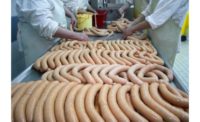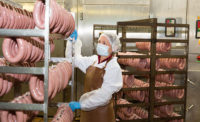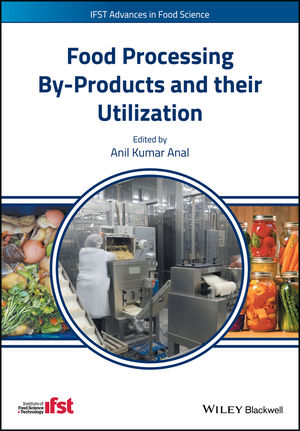Supplier's Perspective
Addressing allergen risks

Today’s heightened occurrence of food allergies and intolerances are difficult to ignore. Approximately 15 million people in the U.S. have a food allergy — representing a greater number than the entire populations of New York City, Los Angeles and Chicago combined.
Eight major food allergens — milk, egg, peanut, tree nuts, wheat, soybeans, fish and crustacean shellfish — are responsible for most of the serious U.S. food allergy reactions. Sesame, used extensively in pastes, ethnic dishes, sauces and meat and fish coatings, is an emerging concern. Many meat and poultry plants use dry and liquid sauces, marinades, herb and spice blends — as a result, manufacturers must be more cautious about contaminant detection.
To combat processing allergen risks, meat processors should regularly review:
Equipment cleaning protocols: These should be formalized and included in staff training. Every cleaning process needs to be verified and documented. As part of a validation process, regular tests, including swabs of critical control points, should be scheduled to keep areas allergen-free.
In-process metal detection: Contact surfaces on conveyor, pipeline and gravity systems should be as smooth and crevice-free as possible. This is partly to ensure that no traces of product, allergens or bacteria are left, but also to reduce the risk of cleaning agents not being fully rinsed away.
Powders and liquids: Product residues, potentially including allergens, can be especially troublesome in gravity metal detection systems for powders and particulates, e.g. factories using herbs, spices or breadcrumbs for coating or seasoning. Likewise, liquids, semi-liquids and slurries in pipeline systems can also pose problems. Sauces and marinades could potentially contain mustard, sesame, nuts or soy, for instance. Hygiene processes must be thorough in both settings.
System design: Efficient product changeovers are critical to productivity. Processing, filling and packing lines should be designed to facilitate both quick and deep cleaning.
High-pressure cleaning: The metal detector should be sufficiently robust to withstand high-pressure cleaning. When selecting a system, care should be taken to identify equipment with an ingress protection (IP) rating appropriate to the washdown regime being applied.
Reject mechanism: Special attention should be paid to the reject unit. Ideally, this will be detachable (easily detached, but quickly and securely reattached, too) to allow thorough cleaning.
Other risk sources: There are many other potential sources of cross-contamination in a meat and poultry processing factory. The potential role of operators in spreading allergens by moving ingredients around the floor in unsealed containers, running allergenic products at the start of the shift rather than the end, not changing or cleaning protective equipment, for example, needs to be driven home where the risks are especially high.
Purchasing the best metal detection equipment for the job may constitute only one portion of a much bigger picture. Yet, it provides evidence that your company is taking the threat contamination from allergens and pathogens seriously and will make a real and valuable contribution to reducing those risks. NP
For more information, visit www.fortresstechnology.com.
Looking for a reprint of this article?
From high-res PDFs to custom plaques, order your copy today!








